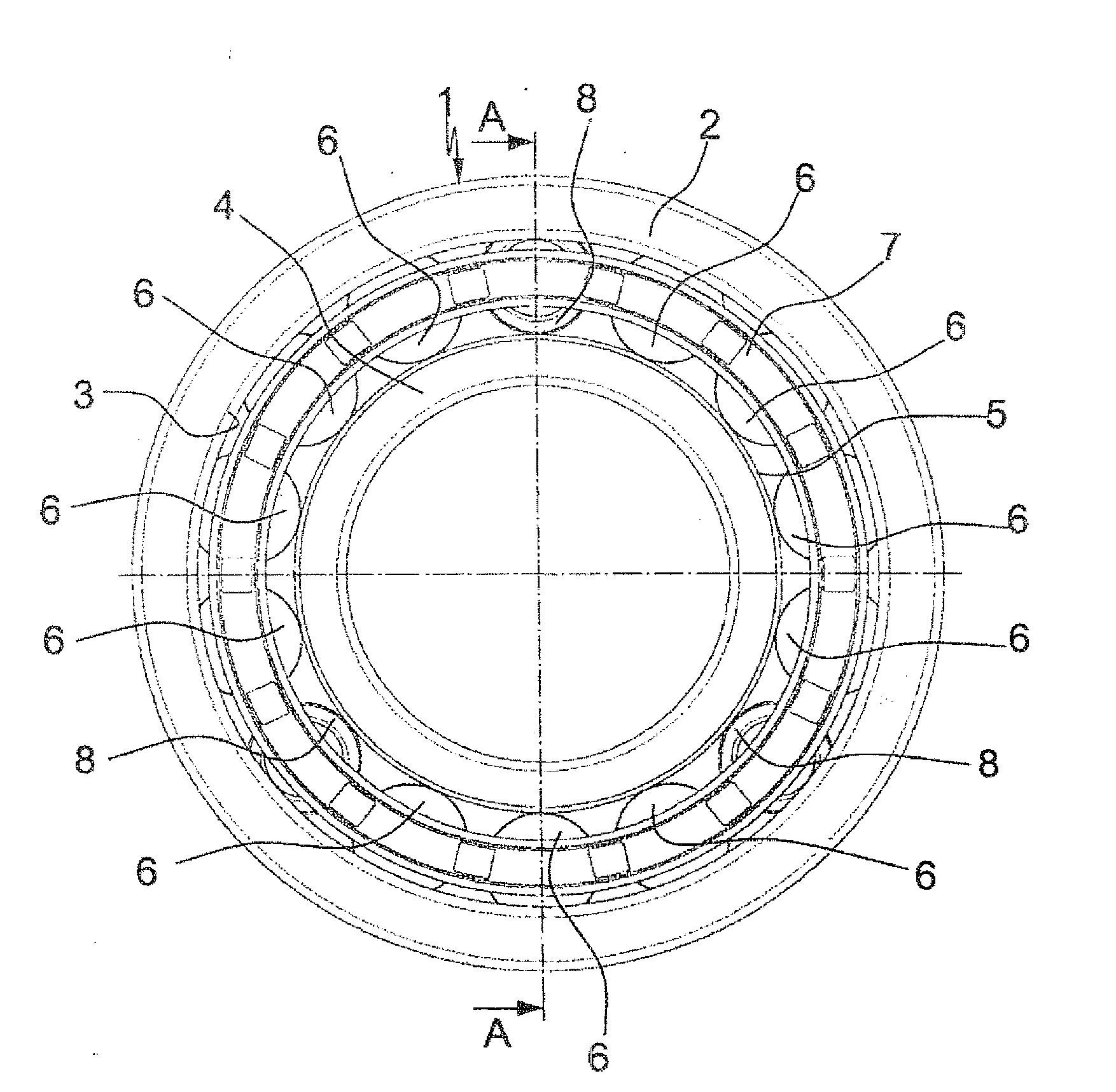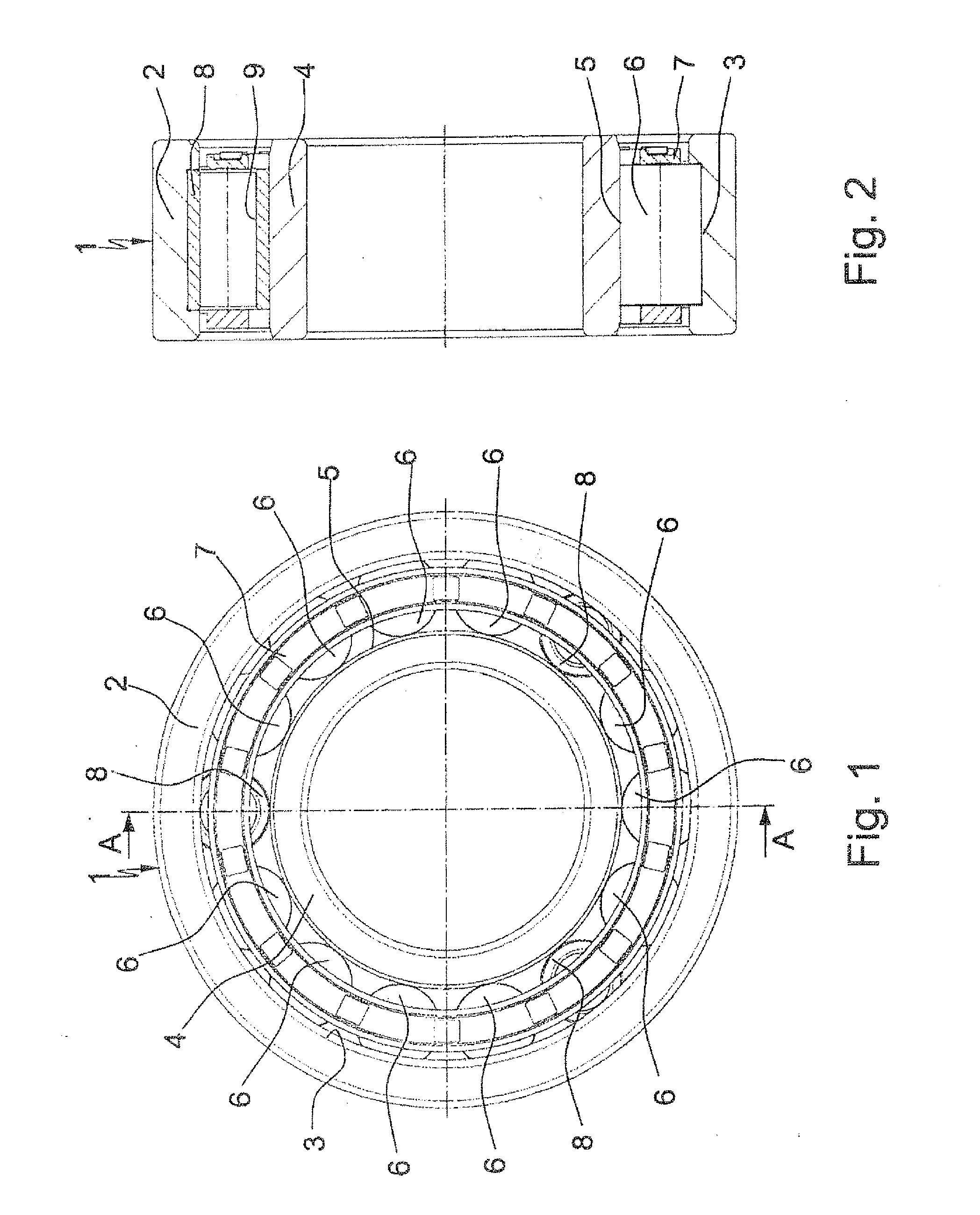Radial roller bearing, in particular for storing shafts in wind turbine transmissions
a technology of rotating roller bearings and shafts, which is applied in the direction of mechanical equipment, machines/engines, electric generator control, etc., can solve the problems of inadequate lubricating film, high tangential stress in the surface, and damage to the lubricating film, etc., and achieves the effect of increasing bending fatigue strength and fatigue strength
- Summary
- Abstract
- Description
- Claims
- Application Information
AI Technical Summary
Benefits of technology
Problems solved by technology
Method used
Image
Examples
Embodiment Construction
[0006]According to the invention, in the case of a radial roller bearing as claimed in the preamble of claim 1, this object is achieved in that the inner envelope surfaces of the hollow rollers are formed with a maximum surface roughness, which avoids local stress peaks, of Rz≦25 μm, without any grooves in the axial direction.
[0007]The invention is therefore based on the realization that, by deliberately improving the surface character of the inner envelope surfaces of the hollow rollers, it is in fact possible to avoid the local stress peaks in the hollow rollers, which lead to cracking and finally to fracture of the hollow rollers, in the hollow rollers, and therefore to critically increase the fatigue strength of the hollow rollers, as well as the load capability and the life of such radial roller bearings.
[0008]Preferred refinements and developments of the radial roller bearing designed according to the invention are described in the dependent claims.
[0009]Accordingly, as claime...
PUM
 Login to View More
Login to View More Abstract
Description
Claims
Application Information
 Login to View More
Login to View More - R&D
- Intellectual Property
- Life Sciences
- Materials
- Tech Scout
- Unparalleled Data Quality
- Higher Quality Content
- 60% Fewer Hallucinations
Browse by: Latest US Patents, China's latest patents, Technical Efficacy Thesaurus, Application Domain, Technology Topic, Popular Technical Reports.
© 2025 PatSnap. All rights reserved.Legal|Privacy policy|Modern Slavery Act Transparency Statement|Sitemap|About US| Contact US: help@patsnap.com


